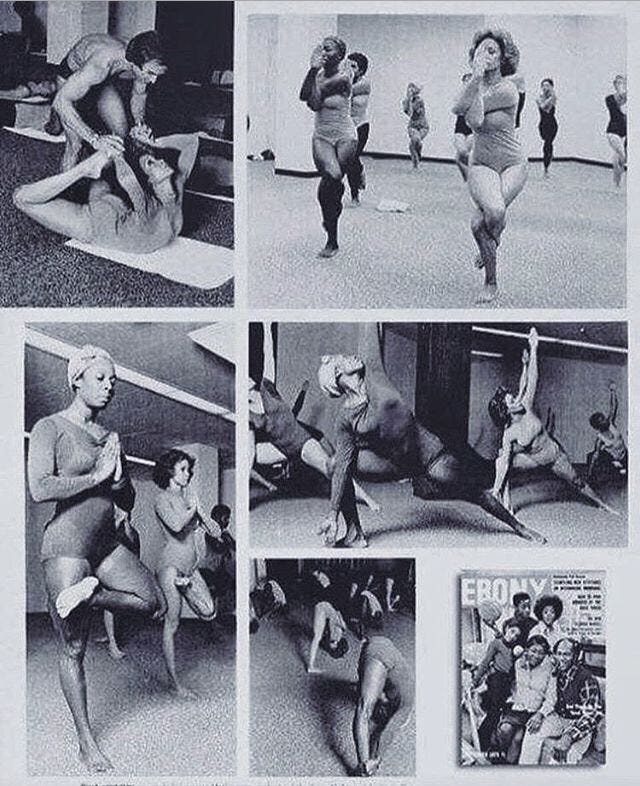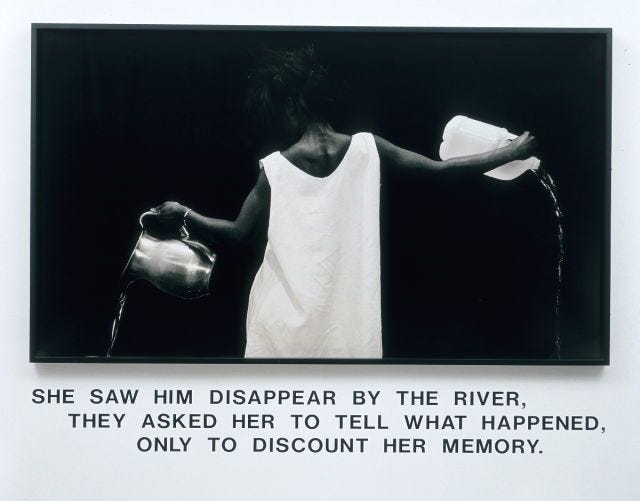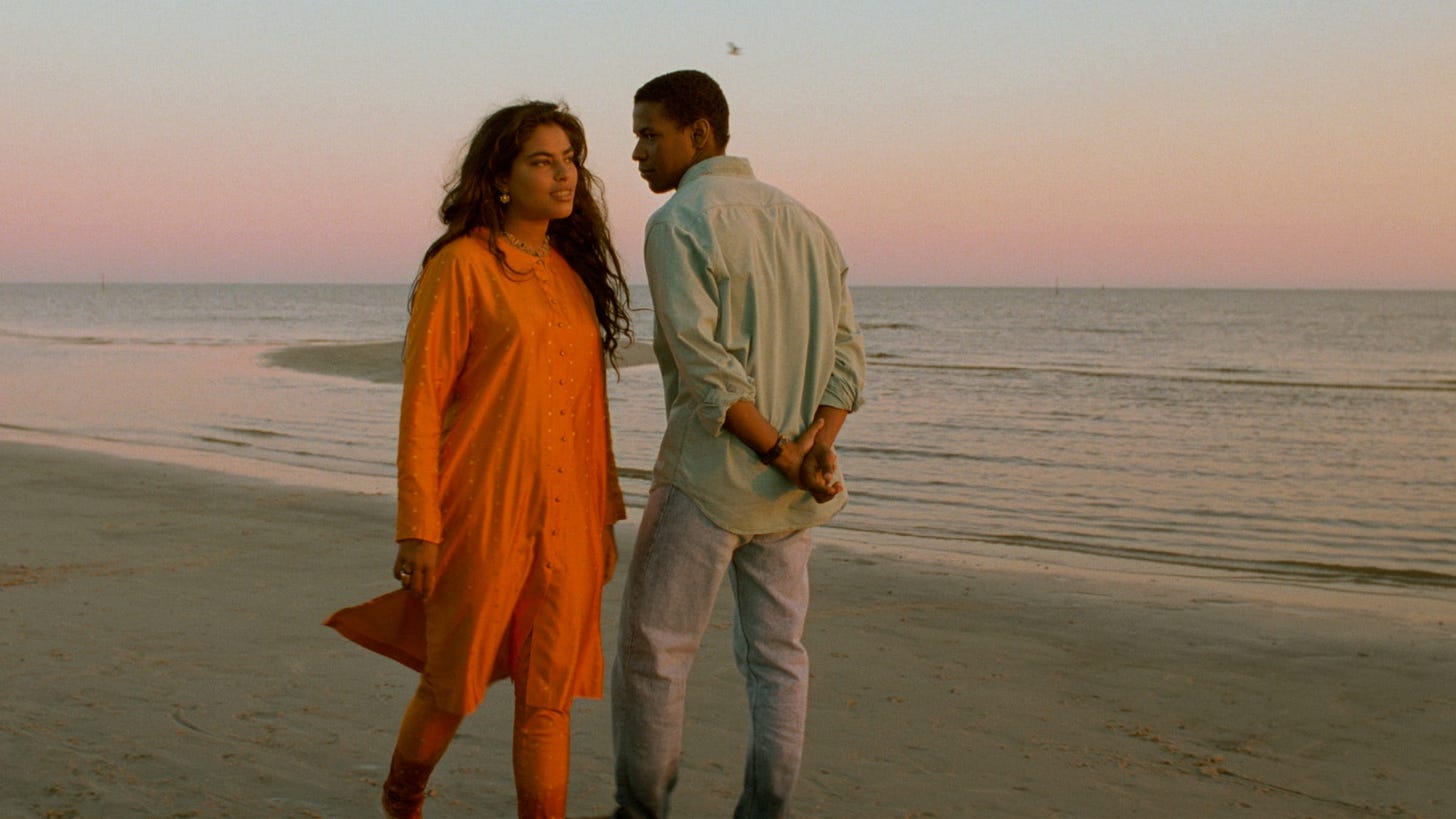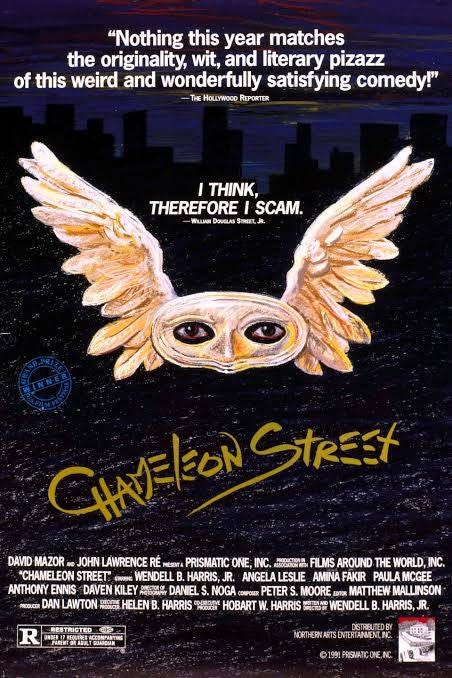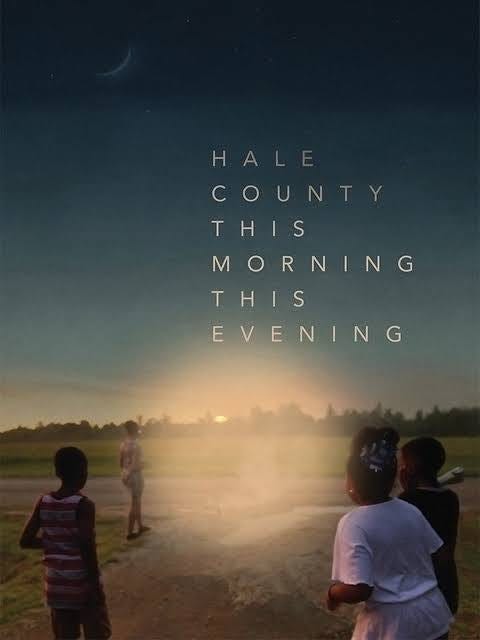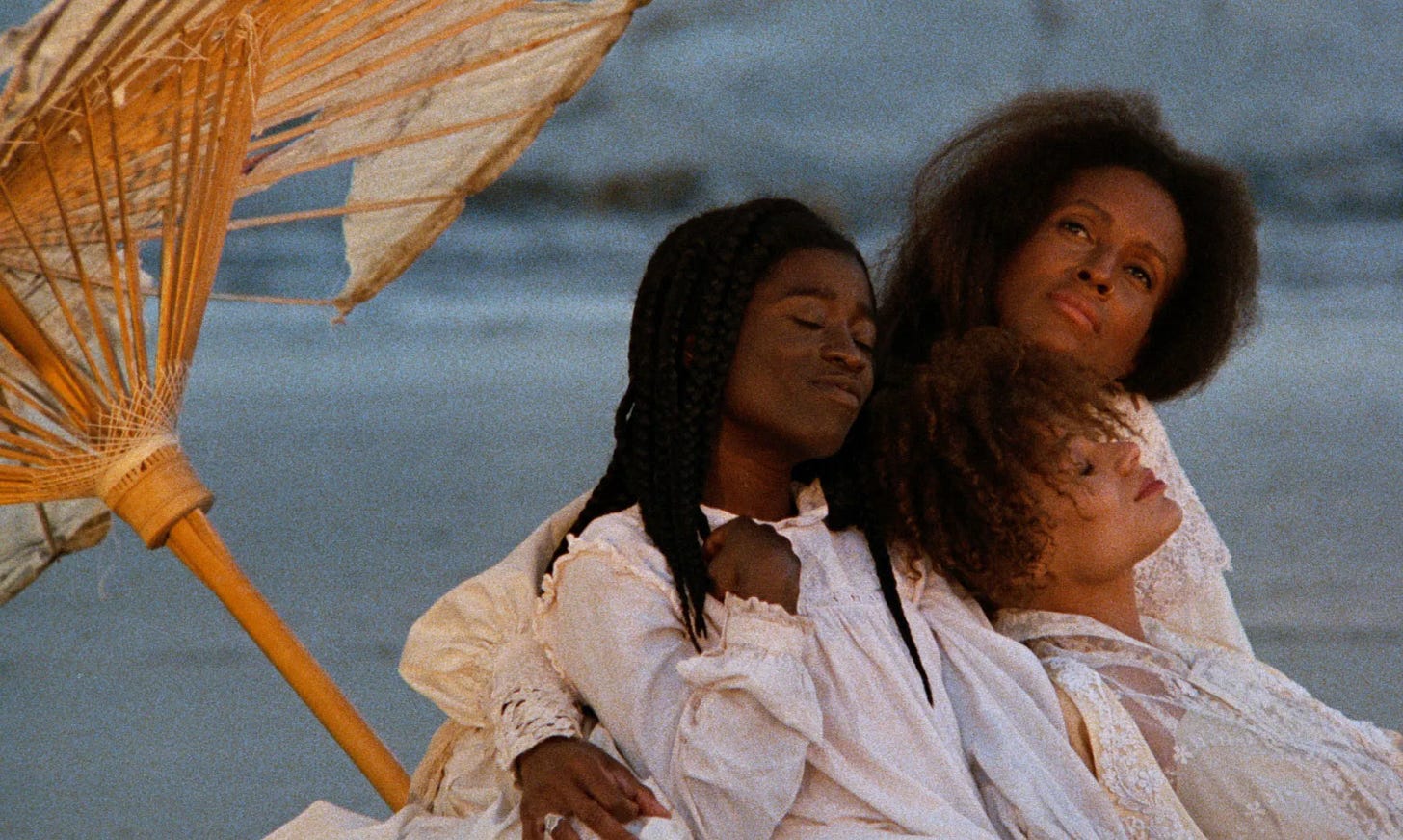A lighter iteration of my weekly newsletter — testing a curatorial format. Welcome back to Quiet Parts, my space for black girl interiority and intricately subversive culture. Each week I publish a poem I’m working on (with working notes for paid subscribers), a longer form essay about art history, politics, and pop culture, and of course I share my Quiet Patronage newsletter rounding up media, visual culture, inspirations, and musings from the week past.
This is a bite-sized curation based on my week’s theme. Two for one this week because I couldn’t resist doing one on the sea. And!! Quiet Patronage, longer form notes, quotes, poems, and paintings coming this Monday.
LG’s guide for Sun Salutations and the Warmth of Other Suns!
the sun salutation.
Surya Namaskar — a sequence of yoga poses performed at the beginning of a Hatha or Vinyasa class to warm up the body and prepare for more intense postures. Hot vinyasa as my current compulsion, and this week’s theme being the warmth of other suns after Isabel Wilkersons’s seminole text on the Great Migration, I figured it was only right to share a sun salutation sequence with some lovely mantras to start your days.
Sun Salutation Sequence A:
Tadasana (Standing Mountain Pose):
Stand at the top of your mat with your arms by your sides. Your feet can be together or hip-width apart.
Align your ankles, knees, and shoulders so your body is symmetrical.
With your arms by your sides, turn your upper arm bones to face each other with your palms forward, opening your chest.
Keep your chin parallel to the floor.
Utthita Hastasana in Tadasana (Arms Extended in Mountain Pose):
On an inhale, reach your arms up and in line with your ears.
Some lineages add a slight backbend at the top of this movement.
Uttanasana (Standing Forward Bend):
On an exhale, bring your arms down, reaching wide, and fold forward at your hips.
Place your hands by your feet or outer shins or on blocks.
Hang your head freely.
Ardha Uttanasana (Half Forward Bend):
On an inhale, reach your chest forward and lift your torso halfway up, with a long spine.
Your hands can be flat outside of your feet, on your outer legs, or on blocks.
Chaturanga Dandasana (Half-Plank Position):
On an exhale, either step back to Plank Pose and lower halfway or jump directly into Chaturanga, outlined below.
Align your wrists under your elbows and bend your elbows halfway, or as low as you can while maintaining a neutral spine, hovering off the floor.
Keep your feet and legs hip-width apart.
Lift your belly and keep the back of your neck long.
Urdhva Mukha Svanasana (Upward-Facing Dog):
On an inhale, roll over the tops of your toes so you’re pressing into the tops of your feet. Press your arms toward straight.
Keep your thighs lifting away from the floor as your tailbone reaches toward your heels. Ensure your abs are engaged.
Adho Mukha Svanasana (Downward-Facing Dog):
On an exhale, uncurl your toes back to a flat-footed position, lift your thighs and hips up, and straighten your knees.
Make sure your arms are straight and firm.
Look between your feet and hold for 5 breaths.
Ardha Uttanasana (Half Forward Bend):
On an exhale, step forward or jump to land with your feet between your hands.
On an inhale, reach your chest forward and lift your torso halfway up, with a long spine.
Your hands can be flat outside of your feet, on your outer legs, or on blocks.
Uttanasana (Standing Forward Bend):
On an exhale, bring your arms down and fold forward at your hips.
Place your hands by your feet or outer shins or on blocks.
Hang your head freely.
Utthita Hastasana in Tadasana (Arms Extended in Mountain Pose):
On an inhale, lift your body, reaching your arms up and in line with your ears.
Some lineages add a slight backbend at the top of this movement.
Tadasana (Standing Mountain Pose):
Stand at the top of your mat with your arms by your sides. Your feet can be together or hip-width apart.
Align your ankles, knees, and shoulders so your body is symmetrical.
With your arms by your sides, turn your upper arm bones to face each other with your palms forward, opening your chest.
Keep your chin parallel to the floor.
For more on Sequences B & C, and a beginners overview of Surya Namaskar click here.
If you’re curious about yoga or vinyasa-as-compulsion see below for a reading list intro to yoga & black girl practice:
LG’s intro-to-yoga reading list~
The Bhagavad Gita
The Bhagavad Gita is a sacred Sanskrit dialogue between Prince Arjuna and the god Krishna, situated within the Indian epic Mahabharata. It presents yoga as a spiritual philosophy structured around the pursuit of liberation through action, devotion, and knowledge, arguing for the ethical performance of one’s duty without attachment to results. It is a cornerstone of Indian philosophy and considered essential for understanding the spiritual dimensions of yoga.
The Complete Illustrated Book of Yoga by Swami Vishnudevananda
This text is a mid-twentieth century manual on Hatha yoga practice, combining physical postures, breathing techniques, dietary principles, and meditation. It offers a practical yet devotional framework for modern yoga, and is structured as a progressive guide to health and spiritual discipline, grounded in Vivekananda's lineage. It is historically significant for being the text that introduced Adrian Piper to yoga and remains one of the first accessible manuals of postural yoga for Western readers.
The Yoga Sutras of Patañjali, trans. Sri Swami Satchidananda
This classical Indian text lays out the foundational philosophy of Raja yoga through a series of concise aphorisms known as sutras. Swami Satchidananda’s translation includes commentary that ties each verse to personal growth, meditation, and ethical discipline, aligning traditional interpretation with contemporary spiritual practice. It holds a central place in the canon as the text most associated with the codification of the eight-limbed path of yoga.
The Heart of Yoga by T.K.V. Desikachar
Written by the son of T. Krishnamacharya, this is a practical and philosophical guide to personalizing yoga practice. The text argues that yoga must be adapted to the individual and weaves together teachings on breath, posture, devotion, and self-study using both anecdotal and scriptural evidence. It is foundational to modern yoga pedagogy and a touchstone for understanding how individualized practice evolved from classical traditions.
[interlude]
[reading list, cont.]
The Subtle Body by Stefanie Syman
This book is a cultural and historical study of how yoga was received, reshaped, and practiced in the United States over the past 150 years. Syman traces figures like Emerson, Theosophists, Vivekananda, Indra Devi, and 1960s counterculture leaders, arguing that yoga in America has always been politically and culturally entangled. It is one of the most cited modern histories of yoga in the West and critically informs conversations around appropriation, transformation, and wellness capitalism.
Endless Wisdom, by Alice Coltrane (Swamini Turiyasangitananda)
Endless Wisdom is a collected volume of spiritual teachings, scriptural interpretations, and poetic reflections by Alice Coltrane during her years as a Vedantic swamini. The text draws on Upanishadic principles and her own revelations, structured as short teachings originally shared at her ashram in California, often accompanied by invocations, devotional chants, and calls for service. It is a rare document of black woman yogic mysticism and holds a singular position at the intersection of jazz, spirituality, and Vedantic practice.
Hatha Yoga Pradipika, trans. Swami Muktibodhananda
This fifteenth-century Sanskrit text is one of the key manuals of classical Hatha yoga and lays out the physical and energetic techniques needed for spiritual awakening. Muktibodhananda’s translation includes detailed commentary on posture, breath, cleansing practices, and inner concentration techniques, organized in a systematic four-chapter structure. It is an authoritative text within yoga pedagogy and essential to teacher training curricula worldwide.
Black Women’s Yoga History: Memoirs of Inner Peace by Stephanie Y. Evans
This groundbreaking work traces the lived experiences of Black women in the United States who practiced yoga as a form of healing, resistance, and self-determination. Evans threads the narratives of women such as Rosa Parks, Audre Lorde, Gwendolyn Brooks, and Octavia Butler using memoirs, interviews, and oral histories drawn from personal archives, university collections, and Black press records. It reshapes the canon by rooting modern yoga in Black women’s interior lives and offers an essential counter-narrative to the whitewashed history of American yoga culture.
Coconut Collard Greens (recipe)
Collard greens carry deep spiritual and ritual significance in black culinary tradition: often symbolizing abundance, protection, and ancestral memory
In many black American homes, especially on New Year’s Day, greens are served to invite prosperity and cleanse the path ahead.
Collard greens became a black American food due to their ability to survive in harsh conditions and their nutritional value. The black style of cooking them comes from African memory, though this food is uniquely African-American.
They were one of the few vegetables enslaved black people were allowed to cultivate for themselves and have survived our history as a nutrient-rich soul food vegetable and cultural icon.
This recipe takes 20 minutes to make and involves the cooking of grits in coconut milk to make them “soft, sweet, and rich.”
“cutting greens,” by Lucille Clifton
curling them around
i hold their bodies in obscene embrace
thinking of everything but kinship
collards and kale
strain against each other
away from my kiss making hand and
the iron bedpot
the pot is black
the cutting board is black
my hand
and just for a minute
the greens roll back under the knife
and the kitchen twists dark on its spine
and i taste in my natural appetite
the bond of live things everywhere.
Must Watch~~~
mississippi masala (1991, dir. mira nair)
a story of layered displacement and love between south asian and black communities in mississippi. intimate, political, and still ahead of its time.
the great migration: a nation divided (2022, pbs)
a documentary tracing the vast scale of black movement out of the south and what that movement made possible. maps, music, memory.chameleon street (1989, dir. wendell b. harris jr.)
a brilliant, biting film about a man who slips between roles and cities. migration as performance and survival.
losing ground (1982, dir. kathleen collins)
a soft and smart portrait of a black woman artist trying to find clarity in upstate new york. moving north, inward, and elsewhere.i am not your negro (2016, dir. raoul peck)
based on james baldwin’s notes, this film moves through cities and uprisings. a migration of the black intellect and spirit across decades.four women (1975, dir. julie dash)
a short film set to nina simone’s song, it’s movement and mourning. the choreography of black womanhood in all its forms.hale county this morning, this evening (2018, dir. ramell ross)
a quiet look at life in alabama long after the promise of movement north. beautiful in how little it explains.
the last black man in san francisco (2019, dir. joe talbot)
a story about staying put when everything else has moved on. black belonging in a city that forgets.daughters of the dust (1991, dir. julie dash)
set on the eve of a family’s migration off the sea islands. memory, matriarchy, and what it means to carry history with you.
cane river (1982, dir. horace b. jenkins)
a southern love story steeped in colorism, land, and black legacy. soft and sun-drenched with a quiet kind of ache.
<333333
Hopefully this was a bit of a warm sun, foreshadowing my obsession with eastern hybridization and Ornamentalism at the site of the black woman. Maybe I’m projecting. This is a question for next week!
Come back this evening for my full-length Quiet Patronage and all that’s to come.
Love always,
LG






